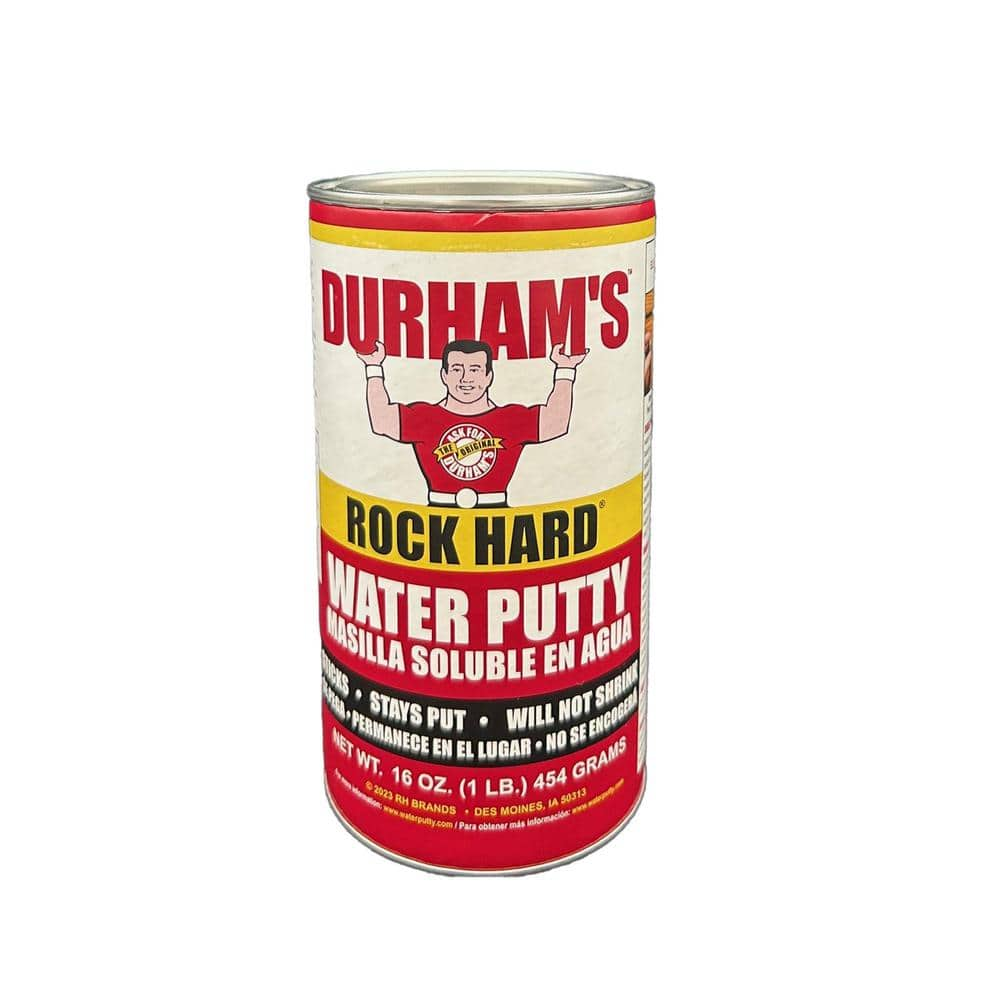yea I wouldn't trust the durham's for a great big chunk like that. Bondo might stick together in a large chunk like that. you can even mix in some fiberglass fibers to add strength to the clump. you cna just take scissors and make fibers form almost any type of fibreglass cloth to mix in.. maybe overfill and let sit to allow shrinkage, or fill again after.
in autobody 1/8 thickness is lots, It's not really meant to put an inch thick but of course it will harden up, because it hardens by its catalyst.
If I mix wood dust and epoxy abotu 50/50 that adds strength in a similar way. , also looks like wood because it is partly wood. you cna just keep adding as much dust as it can absorb without loosing strength.
do you think spray paint changes the slip between the cloth and slate? or makes no difference maybe? I guess that's cosmetic. looks nicer than a patch repair.
I did a table that I covered with a new sheet of particleboard so the cutouts were a bit rough and didn't want the edges coming apart.
I put JB weld on the edges, then stapled plastic strips so it had a nice smooth form, removed the plastic after, now the edges are a bit better protected from any hits, than they would be if just particleboard edges. it also was a quick way to remove the serrations from jigsaw
I had to lift the rails 3/4" of course, so I cut the particleboard 1" small and made a nice stained edge with an appropriate beaded profile so it didn't look too weird.
balls made a rough sound as it wasn't very smooth particleboard back then , had that cheap table rolling sound.. the new stuff is dead flat and after screwing them together it played nice, sounded nicer. now it's 1 1/2 " thick.
It was never a slate table but a nice little Brunswick portable from 1961. original rubber was tiny , only about 1/2" and long obsolete. I used 3/4" like from a later brunswick , i think maybe maybe a century table used that one.. had to trim the rails to keep the playing size equal, worked out well.
the pockets were a bit hard to fix as they are , also obsolete and they were white rubber. I used sheet rubber and some plastic trim pieces to fix up the edges. the pockets got 1/4" sheet rubber behind.
I cut a little strip from a leather belt and used that as a staple strip just below the edges of the trim, that helped any balls to go down. after that even the hardest shots don't shoot back out or do funny thigns, they just go down. I used 1/8th rubber for the cheeks, it worked out well , reduced pocket size to make it more challenging. copied the origianl profiles as close as possible otherwise.
we used it lots for about 2 years and moved up, I put it for sale, some interest, not many cute little vintage tables out there used. definitely not an easy way to profit, im asking 800 and it cost about 500 for materials, to do , plus the table which I was lucky to get for free.. its bright orange which is kind of cool.
i occasionally see old brunswick 7" later ones, after abotu 1964 they used some sort of honeycomb material for the top. they dont have the side ball returns like mine.
all the department store 4x8s came a bit later, none of them were comparable quality. I do have a slate 4x8 that's brunswick, 1970. I've had it up for free for a while. It's taking more time to give it away than it's worth ;-) thought I'd set it up, but I like the old BBC one I found a lot better.
It was a brute to move though, frame is one big piece, does not disassemble. moved it by myself up the steps through the door, lots of rollers , winching etc. had a buddy help a bit to lift and carry the slates.. didn't want to lift slates myself. I got them all up out of my van onto my trailer then up onto the boulevard ( two ladders with planks to bridge the sidewalk and wall.. then up my big front staircase all by myself, rollers plywood ,come-along etc.
here's the little Brunswick
you can see the frame of the BBC below. I got it up my stairs to my door and drats, would not fit ! finally I removed some trim, gave it a shove and it only just fit in through my door.
some of these old BBC tables have a frame that disassembles, this one is not made to disassemble, its all doweled together. the cross-bracing comes out but that big frame is a lot harder to move than the slates for it.
